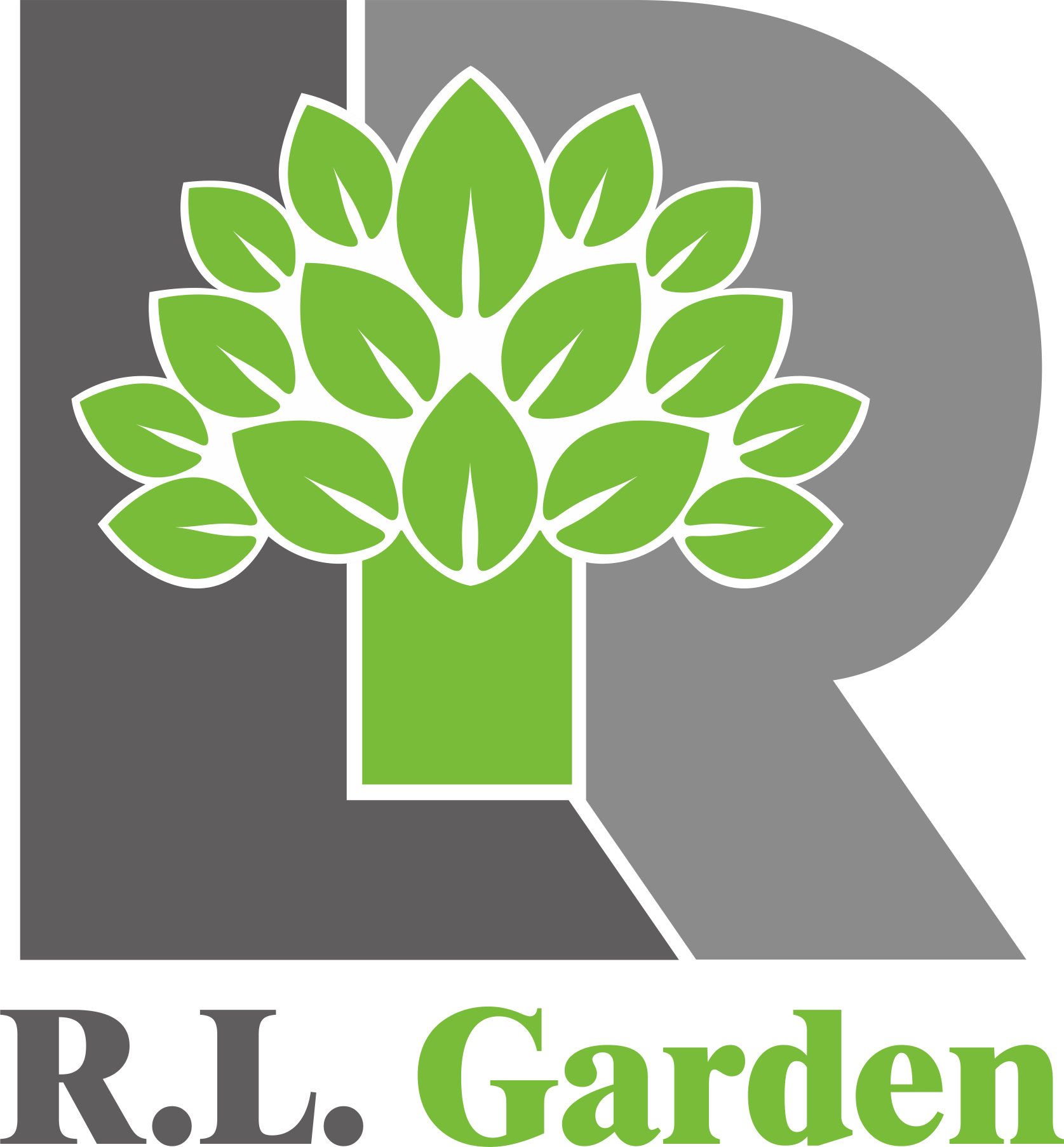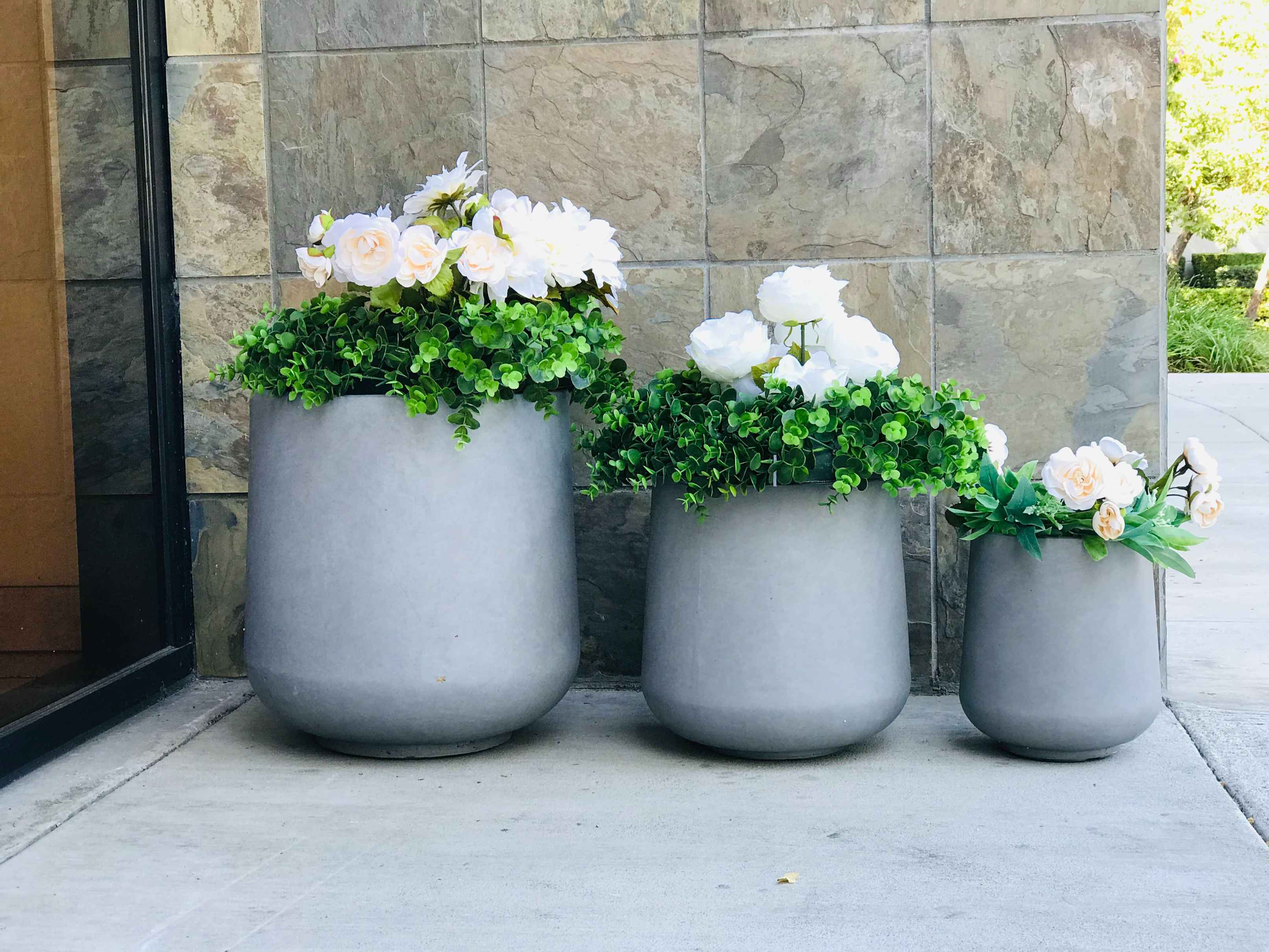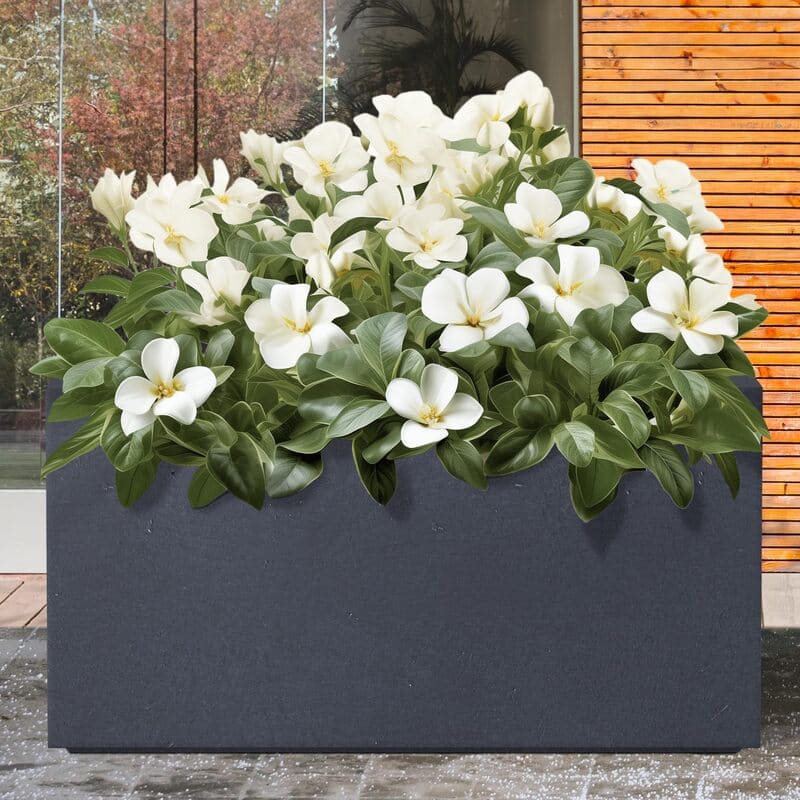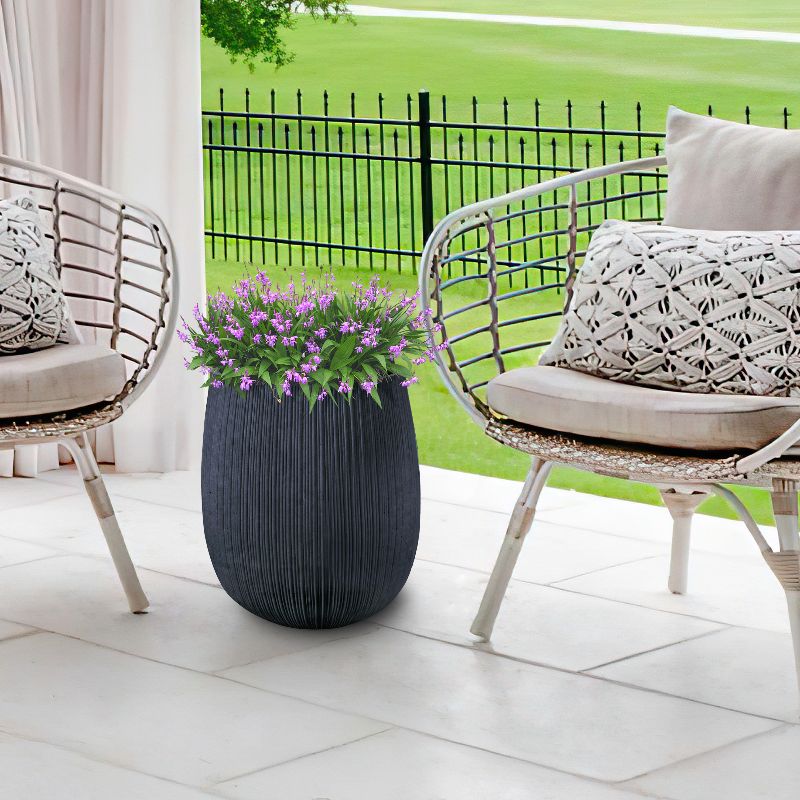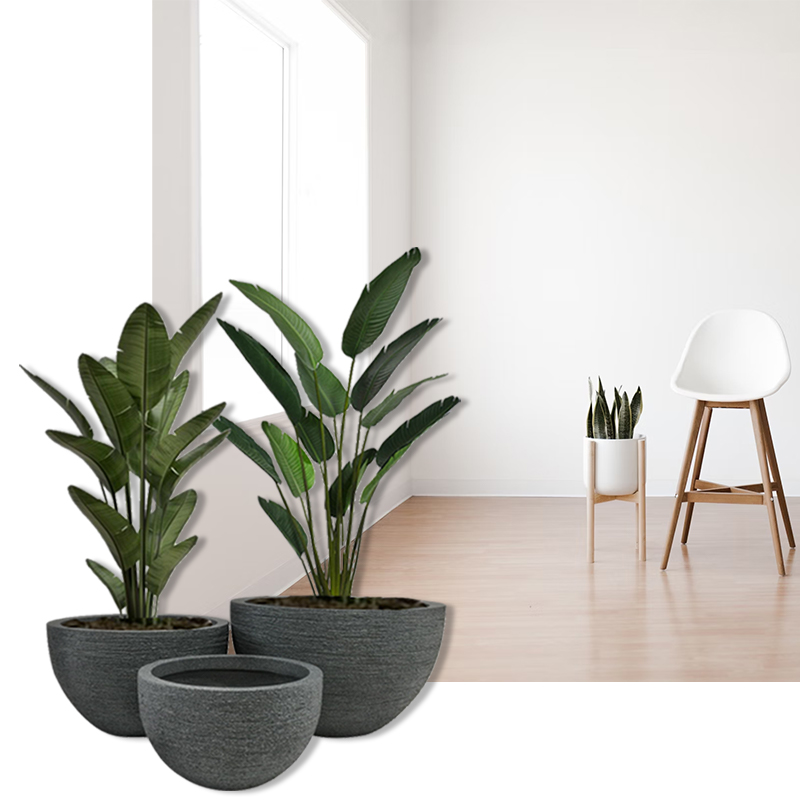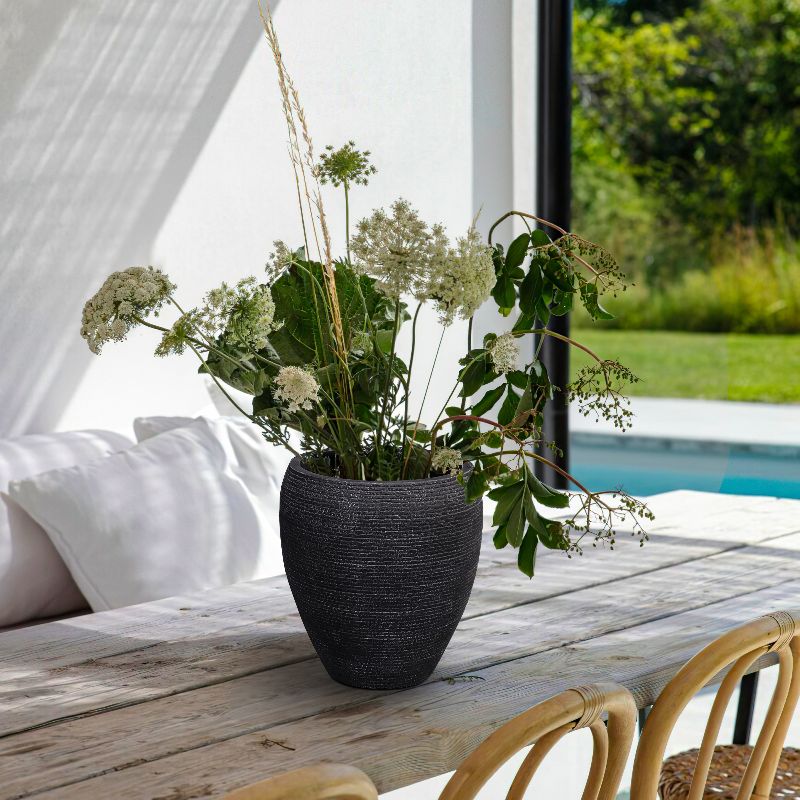Selecting the right material for outdoor flower planters is critical for their longevity, functionality, and aesthetic appeal. Outdoor planters must endure changing weather conditions such as sunlight, rain, wind, and temperature variations. Not all materials are equally suited for outdoor environments, and this article focuses on those that are suitably equipped to handle these challenges.
Fiberglass
Fiberglass is one of the most suitable materials for outdoor planters due to its durability, lightweight nature, and weather resistance.
Weather-Resistant: Withstands rain, UV rays, and frost without cracking or fading.
Lightweight: Easy to move, even when filled with soil and plants.
Durable: Resistant to corrosion, making it a long-lasting option for outdoor use.
Fiberglass planters are great for modern gardens, balconies, and rooftop spaces where lightweight yet weather-resistant solutions are required.
Concrete
Concrete planters are a top choice for outdoor use due to their durability and ability to withstand extreme weather conditions.
Strong and Stable: Can handle heavy plants and won’t tip over in strong winds.
Weather-Tolerant: Resistant to heat, frost, and rain.
Thermal Insulation: Helps maintain stable soil temperatures, protecting roots.
Perfect for large plants, shrubs, and small trees in gardens, patios, or public spaces where a sturdy and low-maintenance solution is needed.
Ronglin Concrete Planter Set for Outdoor Use
Metal (Powder-Coated Steel or Aluminum)
Metal planters, particularly those made from powder-coated steel or aluminum, are well-suited for outdoor use due to their strength and resistance to the elements.
Durable: Can handle harsh weather conditions and won’t break or crack.
Rust-Resistant: Powder coating prevents rust and corrosion, extending its lifespan.
Modern Aesthetic: Complements contemporary garden designs.
Metal planters are ideal for sleek, minimalist outdoor settings such as decks, patios, or commercial landscapes.
Plastic (High-Density Polyethylene)
Not all plastics are suitable for outdoor use, but high-density polyethylene (HDPE) planters are an exception.
Weather-Resistant: Can withstand UV rays, rain, and freezing temperatures without cracking or fading.
Lightweight: Easy to move and reposition.
Low Maintenance: Does not require sealing or special care.
HDPE planters are versatile and work well in residential gardens, balconies, and outdoor spaces where affordability and durability are key.
Treated Wood (Cedar or Teak)
While untreated wood is prone to rot and pest damage, treated wood such as cedar or teak is a highly suitable option for outdoor planters.
Naturally Weather-Resistant: Cedar and teak are naturally resistant to moisture and insects.
Thermal Insulation: Keeps soil temperatures stable, promoting healthy plant growth.
Eco-Friendly: A renewable resource with a natural aesthetic.
Treated wood planters are perfect for rustic, cottage-style gardens or outdoor spaces requiring a natural look.
Stone
Natural stone planters, such as those made from granite or marble, are a premium option for outdoor use.
Extremely Durable: Virtually indestructible and resistant to all weather conditions.
Aesthetic Appeal: Adds elegance and timeless beauty to outdoor spaces.
Heavyweight: Stable in windy conditions.
Stone planters are best for luxury outdoor spaces, large plants, or areas with strong winds where stability is a priority.
Materials to Avoid for Outdoor Planters
While many materials can technically be used outdoors, some are not ideal for long-term outdoor exposure:
Terracotta: Prone to cracking in freezing temperatures and requires frequent maintenance.
Ceramic: Decorative but fragile and easily damaged by extreme weather.
Untreated Wood: Susceptible to rot, mold, and pests.
Conclusion
The most suitable materials for outdoor flower planters include fiberglass, concrete, powder-coated metal, HDPE plastic, treated wood, and stone. Each of these materials offers unique benefits, from durability and weather resistance to aesthetic appeal and versatility.
When choosing a material for your outdoor planters, consider the local climate, planter weight, maintenance requirements, and design preferences. With the right choice, your outdoor flower planters can thrive while enhancing the beauty of your garden or outdoor space.
